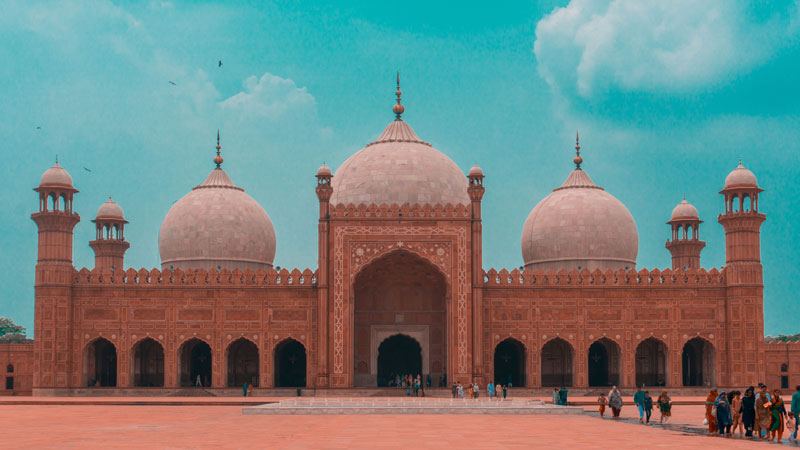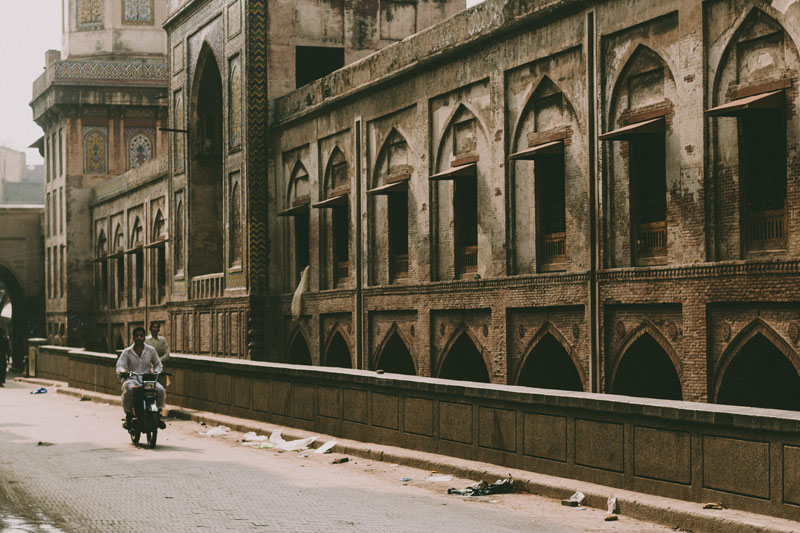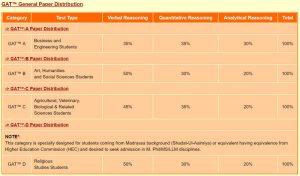Originally published on September 11, 2019. Last updated on April 17, 2025.
In Pakistan, the term “Thana Culture” refers to the traditional system of policing—one that’s deeply rooted in the colonial-era laws established during the British Raj. While this system was originally designed to maintain control over a vast and diverse population, its structure has remained largely unchanged for over a century. As Pakistan moves forward into the digital age, the need to modernize this archaic system has never been more urgent.
Today, technology offers not only an opportunity to improve transparency and efficiency in law enforcement, but also a path toward building trust between citizens and the state. The story of police reform in Pakistan is no longer just about rewriting laws—it’s about leveraging innovation, digital tools, and data-driven systems to create a fairer, more responsive justice framework.
A Legacy of Control: The Origins of Thana Culture
The origins of Pakistan’s policing system can be traced back to the Police Act of 1861, implemented by the British colonial administration after the First War of Independence (1857). The primary objective was not to serve the public, but to maintain control over it. After partition in 1947, Pakistan inherited this structure, and for decades it remained largely untouched.
Though the Police Order of 2002 introduced some changes—like community policing and checks on police powers—true transformation has been sluggish. A fundamental issue is that the very DNA of Thana Culture is authoritarian: it emphasizes hierarchy, force, and fear over community service, protection, and justice.
Human Cost: The Impact of a Flawed System
The human impact of an outdated policing structure is not abstract. It manifests in countless stories—many untold—of coercion, abuse, and impunity. One case that captured public attention was that of Salahuddin Ayubi, a mentally ill man who was taken into custody for an alleged ATM theft in 2019. Salahuddin died under suspicious circumstances while in police custody. His death sparked national outrage and became a symbol of the urgent need for police reform.
Such tragedies raise fundamental questions: How can we prevent misuse of power? How do we ensure accountability? And how can technology play a role in these solutions?
Digital Transformation: A New Path Forward
While challenges persist, there’s growing momentum around the idea that technology can help reshape law enforcement in Pakistan—making it more transparent, accountable, and citizen-friendly.
Here are several ways digital transformation is being explored and expanded in Pakistan’s justice system:
1. E-Complaints and Digital FIRs
In the past, simply registering a First Information Report (FIR) was a complex, often intimidating task. Many citizens feared walking into a police station. Now, with the introduction of online FIR registration portals, people can lodge complaints from their homes, bypassing gatekeeping and reducing opportunities for corruption.
Punjab Police, for instance, has developed web-based and mobile complaint systems, enabling easier access for the public. These systems also generate digital records, reducing the likelihood of evidence manipulation or case tampering.
2. Body-Worn Cameras
A growing number of police departments worldwide are using body cameras to record interactions between officers and citizens. These devices serve two main purposes: they protect the public from police misconduct, and they protect police officers from false allegations.
Pilot programs in cities like Lahore and Islamabad are starting to test this technology. Though still limited in scope, these initiatives are promising first steps toward improving accountability and transparency.
3. AI & Predictive Analytics
Imagine being able to predict hotspots for criminal activity before a crime occurs. This isn’t science fiction—it’s data science. With artificial intelligence (AI) and machine learning, law enforcement agencies can analyze historical crime data, spot patterns, and allocate resources more efficiently.
While this kind of predictive policing is still in its infancy in Pakistan, institutions like the National Centre for Artificial Intelligence are exploring these applications with growing interest. With proper oversight and ethical frameworks, such tools can help optimize patrols and reduce response times.
4. Biometric Verification Systems
Traditional identity verification methods are prone to error and abuse. With biometric systems, including fingerprint and facial recognition, the process of tracking individuals in custody becomes more accurate and less susceptible to manipulation.
The National Database and Registration Authority (NADRA) has already laid the groundwork by digitizing citizen records. Integrating police operations with NADRA’s data can ensure more precise and transparent law enforcement procedures.
5. Digital Surveillance with Ethics
Closed-circuit television (CCTV) networks have expanded across urban centers, and while they’re often criticized for enabling a “surveillance state,” they can be powerful tools for public safety—if used ethically.
Pakistan’s Safe City projects, such as those in Lahore and Islamabad, have shown potential in preventing crimes and ensuring rapid response times. But the future depends on transparency, public engagement, and strong data protection laws to prevent misuse.
Cultural Shifts: Technology Alone Isn’t Enough
While tech solutions are powerful, they are only tools. True reform will require changing the internal culture of law enforcement—from authoritarianism to service, from secrecy to transparency, and from fear to accountability.
This transformation can only happen when there’s buy-in from the top, support from civil society, and engagement from the tech sector. Training programs need to evolve. Digital literacy must be built into police academies. Tech startups and innovators should be encouraged to build public-sector solutions with open APIs, security standards, and citizen feedback in mind.
Government’s Role: A Window of Opportunity
There are signs of hope. The Chief Minister of Punjab recently took notice of high-profile custodial deaths and called for reports from the Inspector General of Police. While such actions often remain symbolic, they reflect growing political will.
In 2023, Pakistan also launched its Digital Pakistan Policy, aimed at harnessing the power of technology across sectors, including governance and law enforcement. International organizations and donors have also shown willingness to support transparency and digitalization projects—offering financial and technical assistance.
Looking Ahead: The Case for Optimism
Thana Culture isn’t going to disappear overnight. But with the right investments in digital infrastructure, ethical technology, and human-centered policies, Pakistan has a unique opportunity to leapfrog into a new era of justice.
The next decade could witness a dramatic transformation in how law enforcement is perceived and practiced in the country. Citizens could feel safer. Police could feel more respected and better equipped. Trust—so long eroded—could begin to rebuild.
It all begins with a commitment to transparency, a willingness to innovate, and a belief that systems can change. In the end, technology is not a magic wand—but it is a powerful lever. And in Pakistan, that lever is finally beginning to move.
Originally published on September 10, 2019. Last updated on April 17, 2025.
This article has been updated to reflect recent developments, digital innovations, and ongoing reforms aimed at modernizing Pakistan’s law enforcement landscape.
Introduction
In Pakistan, the term “Thana Culture” is more than just a reference to the physical presence of police stations—it’s a deeply rooted symbol of the traditional policing system, often associated with bureaucratic red tape, outdated practices, and at times, public mistrust. For decades, it has represented both the enforcement of law and, unfortunately, the cracks within the justice system.
But like every sector touched by the wave of digital transformation, Pakistan’s law enforcement is also standing at a pivotal crossroads. The question isn’t just whether Thana Culture needs reform—it’s how technology, transparency, and accountability can reshape it for the better.
The Colonial Roots of a Complex System
To understand today’s challenges, we must revisit the system’s origins. The structure of policing in the Indian subcontinent, including modern-day Pakistan, stems from the Police Act of 1861, implemented by the British colonial rulers following the War of Independence in 1857. Its purpose was clear: to control, not to serve.
The colonial police system was never designed with democratic values or citizens’ rights in mind. It was a tool for maintaining authority over a colonized population. Fast forward to post-independence Pakistan, and this same system—with only minor tweaks—continued to define how law enforcement operated for decades.
Until the Police Order of 2002, the original ordinance from the 1800s remained largely unchanged. Despite the shift in political landscapes, digital revolutions, and societal evolution, the core mechanisms of the police system stayed rooted in the past.
The Public Perception Problem
Over time, Thana Culture evolved into something deeply embedded in public consciousness. For many, it invokes fear instead of reassurance—thanks to widespread reports of:
- Bureaucratic inefficiency
- Abuse of power
- Corruption and bribery
- Coercive interrogation tactics
- Lack of procedural transparency
One particularly tragic case that brought this culture into the spotlight was that of Salahuddin Ayubi, a young man taken into custody over an alleged ATM theft. He died while in police custody under suspicious circumstances, igniting a national conversation around human rights, accountability, and institutional reform.
While his story was heartbreaking, it served as a powerful catalyst—reminding the public and policymakers alike that reform isn’t optional; it’s urgent.
A Shift in Mindset: From Control to Service
Thankfully, Pakistan is beginning to see a shift—from control-based policing to service-oriented law enforcement. This transformation is not just driven by policy but by digital innovation, data transparency, and civic engagement.
Recent initiatives by provincial governments and reform-focused leadership—like the Chief Minister of Punjab taking direct notice of custodial abuse cases—signal a willingness to change. But for these reforms to be effective, they need to go beyond statements and dig deep into structural change.
Here’s where technology can be the game changer.
The Role of Technology in Modernizing Law Enforcement
Modern problems require modern solutions. Around the world, countries are digitizing their justice systems to bring in greater transparency, accountability, and citizen trust. Pakistan, too, has started to embrace this shift.
1. Digital FIRs (First Information Reports)
No longer must citizens wait in line or face intimidation just to register a complaint. Platforms like Punjab Police’s online FIR registration portal are making the process more accessible and transparent.
2. Police Station Record Management Systems (PSRMS)
Digital case tracking helps prevent evidence tampering and ensures that investigations are recorded step-by-step, making internal audits more efficient and reducing human error.
3. Surveillance & Monitoring Tools
Smart surveillance systems, biometric attendance, and real-time monitoring dashboards help ensure officers are on duty and behaving in accordance with the law. CCTV footage in lockups, for example, can help prevent abuse and support investigations into misconduct.
4. E-Ticketing & Traffic Management
Digital traffic ticketing systems not only make the process more efficient but also reduce opportunities for bribery and misconduct on the roads.
5. Citizen Feedback Systems
Mobile apps and SMS-based feedback platforms are being tested to allow citizens to rate their experience with police stations. This data can be used to reward good officers and identify problem areas.
6. Facial Recognition and AI-Assisted Policing
While still in early stages, there’s growing interest in using AI to scan surveillance footage, predict crime hotspots, and even streamline criminal investigations. However, such advancements must be paired with strong data privacy protections to avoid misuse.
Human Rights and Digital Accountability Must Go Hand-in-Hand
Technology can empower—but it can also oppress if misused. In building a digitally enhanced police force, human rights must remain at the center.
Every algorithm, surveillance camera, or digital ID system should be subject to independent audits, clear legislation, and data protection protocols. Citizens must have the right to access, question, and appeal digital records that concern them.
Cases like Salahuddin’s underscore the importance of ensuring that justice is never reduced to data points—that the human element of empathy, fairness, and accountability must guide every policy and every tool.
Youth, Social Media, and the Power of Civic Tech
One of the unexpected but powerful forces of change is digital citizenship. Platforms like Twitter, Facebook, and YouTube have become public courts where cases are debated, abuses are exposed, and reforms are demanded.
Digital campaigns led by students, journalists, and civil rights groups have successfully pressured lawmakers and police departments into taking action. Civic tech platforms, such as FixMyStreet or Right to Information portals, are emerging as ways for citizens to report issues and track government performance.
This new generation isn’t just waiting for change—they’re coding it, tweeting it, documenting it. And that’s something institutions can no longer ignore.
Challenges Ahead: Bridging the Gap Between Policy and Practice
Despite encouraging steps, challenges remain:
- Resistance to change within the police force
- Inconsistent training in tech tools
- Rural areas lacking digital infrastructure
- Weak data protection laws
- Delays in implementation
But these aren’t dead ends—they’re roadblocks that can be overcome with political will, funding, and public demand.
Conclusion: The Future of Thana Culture
Thana Culture as we know it is on the brink of evolution. What began as a colonial enforcement mechanism can be reborn as a modern, transparent, and community-driven policing model—if we continue to blend reform with innovation.
Pakistan has a real opportunity to leapfrog into a digital era of governance where citizens trust the police, officers are empowered with tools, and justice is served without fear or favoritism.
Change won’t happen overnight. But step by step—through policy, platforms, and people—it is happening.
And in that shift, lies hope.
The policing system, commonly referred to as “Thana Culture,” has historical roots dating back to the British Raj. It was initially established to maintain order in the Indian subcontinent. Over time, its role evolved, particularly after the First World War. Following the partition of the subcontinent, it was decided that existing legal frameworks, including the Police Ordinance of 1861, would remain in effect until new legislation was introduced. This ordinance continued to be implemented in Pakistan until 2001, with limited reforms during that period.
Historically, law enforcement agencies played a significant role in maintaining governance. However, challenges have arisen regarding the treatment of individuals in police custody. Reports of mistreatment, coercion, and undue pressure during investigations have occasionally surfaced, raising concerns about procedural fairness.
One such case involved Salahuddin Ayubi, who was taken into custody in connection with an ATM theft case. During the investigation, he faced difficulties and, unfortunately, passed away while in police custody. His case highlighted the importance of ensuring transparency and accountability within the justice system.
Efforts to reform the policing system remain a priority. The government has acknowledged the need for improvements and has taken steps toward addressing concerns. Recently, the Chief Minister of Punjab took notice of such issues and requested a report from the Inspector General of Police. There is optimism that ongoing efforts will lead to meaningful reforms, fostering a system that upholds justice and fairness for all citizens.
Photo by Wonderlane on Unsplash










